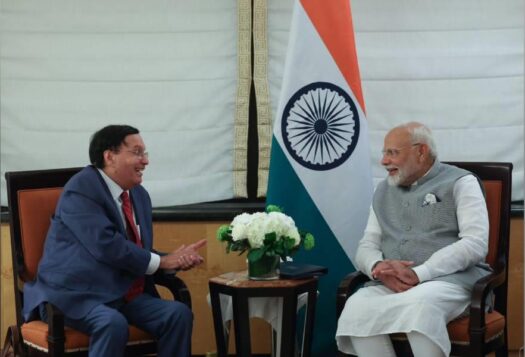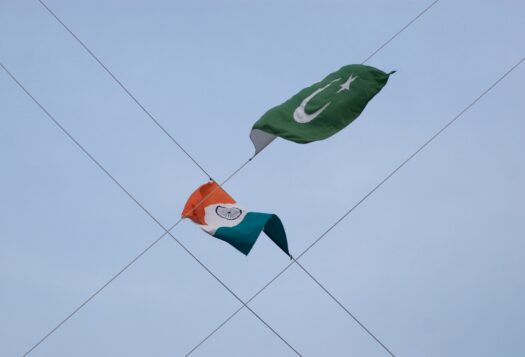
I am happy to see analysis on such important subjects as nuclear security, and it is clear that South Asian Voices has emerged as a major platform featuring voices from the region. The four analyses bring out some pertinent issues concerning nuclear security and how it may be approached from a regional perspective, as well as a broader one. The articles also rightly highlight successes of the three meetings of the Nuclear Security Summit held so far.
Dr. Reshmi Kazi underscores the relevance of the Nuclear Security Summit in the context of national policies and international cooperation, as well as the larger issue of creating greater awareness. She also points to vulnerabilities in South Asia, which if not addressed properly could be a problem not just for the concerned nation, but the region itself. However, I believe that collaborative ventures at a bilateral level do not have much of a future, given the history and politics of South Asia. Hence, I would argue that while every South Asian country must be engaged in the process, the process itself must be at a level broader than the region for it to succeed.
Dr. Arun Viswanathan also highlights the important role played by the Nuclear Security Summit in creating much-needed momentum in the area of nuclear security, and getting countries to take tangible steps such as ratifying the International Convention on Suppression of Acts of Nuclear Terrorism (ICSANT) and the 2005 Amendment to the Convention on Physical Protection of Nuclear Material (CPPNM/A). He has also rightly suggested a bigger role for the International Atomic Energy Agency (IAEA) in nuclear security, a point that has been reiterated by many countries including India. Much like Dr. Kazi’s analysis, this article also makes a case for addressing nuclear security from a regional perspective. Here I would again argue that nuclear security is a much broader subject and should not be narrowed down to the region, especially in the Asian context. An initiative at the regional level among India, Pakistan, and China will be a non-starter due to the history, politics, and security dynamics of the region.
Dr. Zafar Khan stresses the competencies and successes of Pakistan’s nuclear establishment, with respect to both safety and security. Nevertheless, the author’s claim that Pakistan looks to maintain “a modest number of deterrent forces” seems unconvincing. There have been international independent assessments that suggest that Pakistan’s may be the fastest growing nuclear arsenal, set to become the third largest in the world. While the author makes an argument that Pakistan is not shifting away from minimum deterrence, the full-spectrum deterrence that it seeks to achieve clearly indicates that it is moving away from the minimum deterrence posture that is conducive for regional strategic stability.
Dr. Sannia Abdullah lists some of Pakistan’s counterterrorism efforts in stemming the larger threat around nuclear security. The author also brings in some new elements—the need for linking with Kabul in managing and uprooting the larger terror network that exists in the porous border areas. Interestingly, the author connects this Pakistani action to that of the U.S. Coalition Support Fund and the F-16 deal. The importance of F-16s in the fight against terrorism is questionable, but the emotive value of the jets cannot be overstated.
The author also brings up serious concerns around a growing Pakistani nuclear arsenal along with the development of tactical nuclear weapons (TNWs), which are inherently destabilizing. The author also tries to draw an analogy to the Cold War competition and race for domination between the United States and the Soviet Union. However, there are important differences between the current South Asian and the Cold War scenario, the primary one being that Americans and Soviets were not neighbors, which proved to be a big safety cushion for both superpowers. In the South Asian context, geographic proximity heightens the disastrous consequences of even unintended conflict. Secondly, even at the height of Cold War competition, there were clear channels of communication between the two, which were significant in reducing potentially dangerous situations.
However, it is heartening to see the author recognizing the importance of arms control and other measures such as the Fissile Material Cut-off Treaty (FMCT) in the context of strategic stability, and acknowledging that Pakistan is responsible for the current deadlock.
Lastly, while these are all valuable analyses, nuclear security is too big an issue to be approached only from a regional angle. The scope has to be broadened for a nuanced perspective, keeping in mind the politics and baggage of the history of South Asia.
*************
South Asian Voices endeavors to ensure its contributors are influencing policy debates in India, Pakistan, and the United States. To this end, Experts Ki Rai, periodically has experienced South Asia specialists weigh-in on contributors’ analysis, in the hope of continuing to advance meaningful dialogue on the subcontinent and beyond.
***


